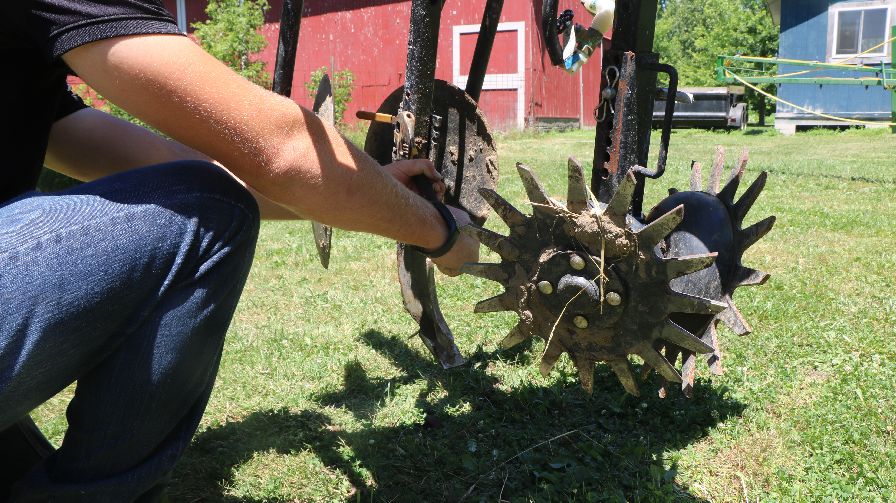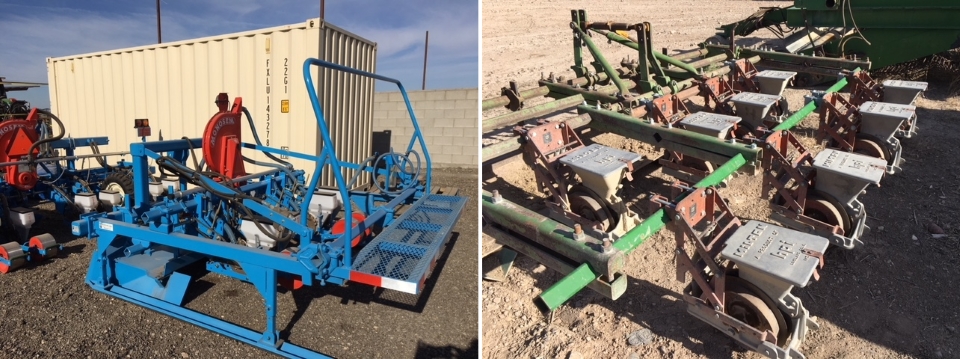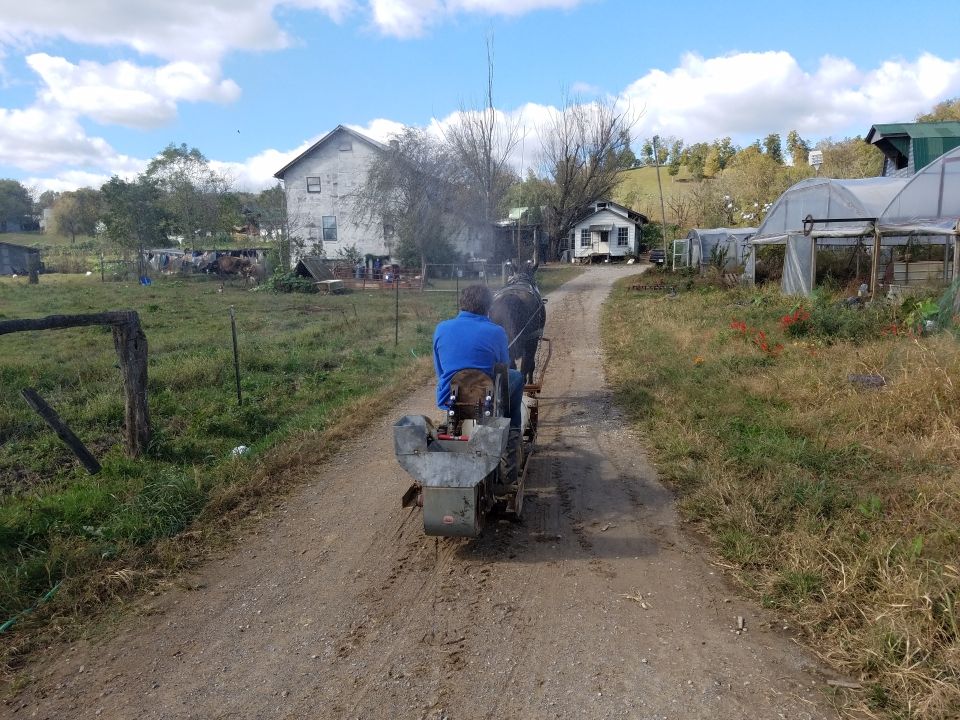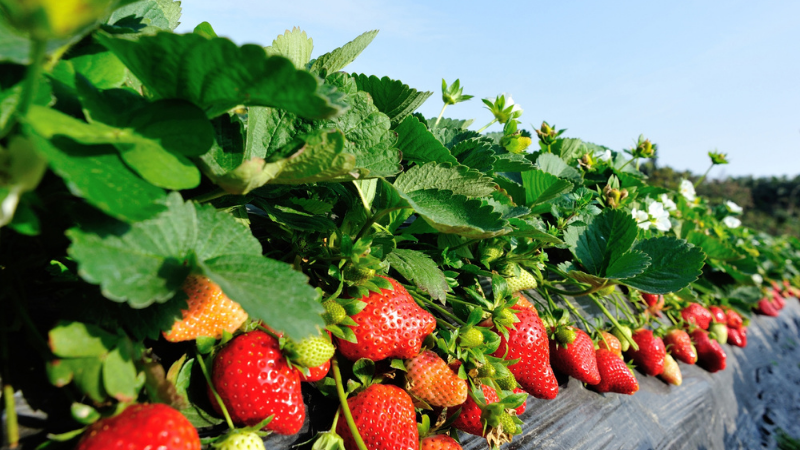Be Smart When You Modify Agriculture Equipment

The practice of modifying agricultural machinery to fit specific farming conditions is certainly not new. But as labor and other resources become ever more scarce and costly, many specialty growers are increasingly adopting it as a strategy to survive or beat the competition.
Larger growing operations with their own engineering departments may have the budget to collaborate with manufacturers to produce custom equipment to fit their individual crops and working conditions; however, most growers are often left with very different options — customizing the equipment on their own, selling the land to a large farming corporation to grow, or going out of business.
Given the significance of the situation, American Vegetable Grower recently reached out to several manufacturers, growers, and Extension agents to assess the implications of modifying ag machinery. Here’s what we learned.

The first step in getting what you need from equipment is to ask for it. In these two images, you can see the results when Keithly-Williams worked with growers to modify seeders so they met their needs.
How Common Is Machinery Modification?
Agriculture machinery manufacturers largely design equipment for the broader farming market, leaving grower-specific requirements to customization. When a grower’s budget can’t justify a custom order, then he’ll modify his equipment.
The most commonly modified equipment includes tillage attachments and implements, bed and mulch layers, planting equipment, crop thinners, harvesting equipment, sprayers, and structures added to tractors.
As equipment gets more complex, modifications will be less frequent, says Nick Copass, Sales Manager of Keithly-Williams’ Fabrication Division.
Modifications are usually mechanical, Copass says.
“If you cut something apart, you can always weld it back together,” he says.
But if you try to modify electronics and other high-tech devices, you may destroy circuit boards.
“Those are expensive, and you’re not covered under warranty,” he warns.
As the industry moves forward, fewer modifications are going to be made, Copass predicts.
The Risks Involved
All the experts consulted agree that modifying machinery may make sense short term, but it’s not without certain risks for the grower.
“I just spoke with a grower [about this],” says Vonny Barlow, a California-based entomologist. “Modifying equipment increases costs (though not as much as buying dedicated equipment). And growers have to make sure the modified equipment can be cleaned for sanitation certification. Jury rigged equipment is unreliable.”
Another concern is that the moment a piece of equipment is modified, all warranties are voided. Although that’s not as likely to concern growers up front.
“Who cares about the warranty if the machine is not performing to what you desire?” says one manufacturer who requested anonymity. “Warranties are like politicians, nothing but double talk.”
Beyond warranties, however, growers face some serious issues, from poorly performing equipment, to damaged crops, to potential safety issues for the operators.
There are risks to the manufacturer, too. For one, modifications can lead to unhappy customers, says Yanmar America’s Reid Hamre.
“We’re trying to live up to our obligations (and defending the brand value) to dealers and end-user customers on pieces of equipment that have been modified to fit applications not envisioned or anticipated during the engineering, product development, and manufacturing processes,” he says.
Since many growers buy used equipment to keep costs down, Mike Miller, Vice President of Marketing at Oxbo International, is concerned with subsequent users of the equipment. They can be exposed to safety risks without knowing the history upfront.
“Repair parts do not fit, and the blame goes to the manufacturer,” he says.
How Smaller Growers Can Get Affordable Customized Equipment
The first step in getting what you need in equipment is to ask for it.
As in many other aspects of agriculture — or any business for that matter — collaboration among players is key.
Growers and manufacturers collaborating benefits everyone, Copass says. Having both parties in group settings helps identify what practices are going to work the best, what growers are trying to achieve, and what technologies are going to work for them in the future.
That said, there can be some tension, Miller says. Equipment and mechanization technology solutions are often treated as “competitive advantages or trade secrets because of the value they create,” he says.
So, in his view, the chances of the fruits of such interaction being shared among growers seem slim for the time being.
Other solutions being developed are more dependent on scale and specific crop issues.
Copass explains that one common issue among lettuce growers is the need for thinning the crop. One manufacturer Keithly-Williams works with to develop custom solutions, Agmechtronix, has designed an automated thinner that will do the work of the 35 to 40 field workers currently needed to thin a 2,000-acre field, thus reducing the labor cost considerably.
That’s great for large operations, but what about smaller growers?
“There are companies such as ours that are instituting a thinning program,” Copass says. “We bought a thinner for demo purposes as well as for doing custom work for the smaller growers, so they can have labor savings, and they don’t have to buy the equipment.”
Growers can ask their current equipment’s manufacturer or dealer to introduce them to those who can create solutions compatible with what they already have, Copass says.
“We are a bridge between grower and manufacturer and trying to match them together,” he explains. “We are in the middle of or spearheading that collaboration, trying to merge grower and manufacturer together. We became the support system for both entities.”
What to Expect in the Future
With all the advances in engineering and manufacturing, and the individual skills of growers, the mechanical harvesting of many specialty crops is still evolving. Developments in agriculture are very time consuming. And except for a few early adopters, growers generally are not eager to implement new technologies.
While new generations of farmers are accepting technological advances and changes at a more rapid pace, Copass says many others in the next generation don’t want to work on the farm. We will see a migration from traditional farming, he says.
“When their children are not taking over, (growers) sell out to larger corporations. So, a lot of farming today is done by large entities,” Copass says.
As we continue facing relevant issues associated with labor costs, resource availability, and the pressure to increase food production, technology will have to bridge the gap. However, technology, its developers, and adopters — and the way they collaborate — will come in all shapes and sizes, just as the specialty crops that initiated the challenge in the first place.

Producers are innovative and adapt tools to their operation, University of Kentucky Extension Professor Ric Bessin says. Here’s a good example of that creativity.
“We have a lot of smaller farms in Kentucky. A group of farmers in a small community — where they grow sweet sorghum cooperatively — built a ground driven (mule powered) air blast sprayer that can be ridden between their 40-inch rows to control sugarcane aphid. They have been very pleased with the results.”










